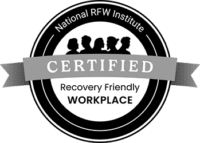Substance Use Disorder in the Workplace: What Employers Need to Know
In the past 3 years, drug use has increased by 16% and alcohol use has increased by 23% within the United States, with 1 in 11 workers currently suffering from an untreated substance use disorder. When substance use and addiction remains unaddressed in the workplace, these disorders are costly and dangerous for organizations, as well as individuals.
Addiction Costs to Businesses
Substance use disorder (SUD) costs U.S. businesses an average of $81 billion in lost profits every year that translate to decreased productivity, high employee turnover, increased absenteeism and sick days, and lower quality of work.
The reality of SUD in the workplace:
- Health insurance premiums are $1,870 more expensive for workers with substance use disorders than for workers without a drug dependence (National Safety Council)
- 15% of workers utilize substances during paid hours (The American Addiction Centers)
- 65% of job-related accidents were associated with substance use and 40% of deaths in the workplace are attributed to employees being intoxicated at time of death (US Department of Labor)
- Nearly ¾ of adults with an untreated substance use disorder are actively employed (National Survey on Drug Use and Health)
- 77% of study associations indicated that higher levels of alcohol consumption were associated with higher levels of impaired work performance (Study published in BMJ Open)
Workplace solutions can be implemented to mitigate the dangers stemming from SUD both for employees and employers.
Ways to Foster a Drug and Alcohol-Free Workplace
Psychological Safety in the Workplace
It is imperative to create a culture of psychological safety within your workplace, as it is widely proven this is a basic and beneficial human need. Psychological safety is defined as the feeling of being able to speak up, take risks, and make mistakes without fear of negative consequences.
This environment cultivates a judgement-free environment for employees to share thoughts or worries, while removing fear and anxiety. When an employee feels psychologically safe, they feel more empowered to seek help when they identify a need for it, including with SUD.
There are simple yet effective steps that can be taken to create this culture.
- Leadership can cultivate their team with care through recognition, celebrating achievements, learning about and celebrating diversity, and identifying internal biases and working to overcome them.
- Within that culture of care, avoid blame culture. While taking responsibility and holding themselves and others accountable is important, it’s equally important to approach mistakes with empathy and understanding to help achieve better outcomes moving forward.
- Listen to employees. When feedback and concerns are brought forward, they should be heard and acknowledged. Whether the topics are work-related or physical/mental health-related, they should be handled with care and compassion to help build the psychological safety of the team.
Every step forward is a step in the right direction.
Identifying Substance Use in the Workplace
There are simple ways you can go about looking for employees who might suffer from an untreated SUD. Some signs to watch for are:
- Missing work or deadlines
- An overall uncharacteristic decrease in productivity
- Physical health changes: dramatic changes in weight, lower energy levels and disheveled or neglected appearance
- Uncharacteristic behaviors such as change in temperament
Once identified, the next step is to make sure employees receive the help and support they need.
Employee Assistance Programs
When deployed with proper care and attention, employee assistance programs (EAPs) can help supplement care needed to support those with SUD. According to the World Health Organization, for every $1 organizations put into mental health programs, there is a 4x return in increased productivity and better health outcomes. These programs fill gaps in care by offering employees additional support in areas including, but not limited to, trauma, financial stress, and substance use. These programs are often under-utilized, but that can be rectified by following some basic guidelines.
Educate employees on the EAP that’s offered. When people understand what’s available and how it can be utilized, they are more likely to participate in the program. Whether this is a company-led annual meeting, an information session led by a representative of the EAP, or just a general FAQ, these tools can offer insights and guidance for individuals to utilize on their personal journeys. Promote this internally and make sure to cover the cost to the employee. Misunderstanding the cost can often be a barrier that employees simply will not cross to take advantage of these EAP benefits.
Recovery Specific Engagement Solutions
GoMo Health is proud to introduce a new product, Recovery Pathways: Workplace. The digital care management solution is specifically designed for employers to use to ensure their company is recovery friendly. Whether you’re a concerned employer or an employee with substance use challenges, Recovery Pathways delivers personalized support for each participant from prevention to diagnosis and management.
National Resources Readily Available
US Department of Labor Recovery-Ready Workforce Hub
The Federal Government has a wide range of resources available to help employers in adopting recovery-ready workplace policies. The US Department of Labor is currently creating a Recovery-Ready Workforce Hub, including information and resources for employers to access. Employers that utilize this will be able to educate all levels of their organization, keep their employees informed and empowered in their own recovery journeys, and reduce the risk of substance misuse.
Learn more: www.dol.gov/agencies/eta/RRW-hub
National Institute for Occupational Safety and Health (NIOSH) Total Worker Health®
According to NIOSH, Total Worker Health is defined as policies, programs, and practices that integrate protection from work-related safety and health hazards with promotion of injury and illness-prevention efforts to advance worker well-being. One of the areas this program highlights is opioid and other substance use disorders in the workplace. NIOSH has developed a four-part framework for addressing the opioid crisis in the workplace, including identifying workplace conditions, determining risk factors, protecting workers and responders, and developing methods for detection and decontamination.
Learn more: www.cdc.gov/NIOSH/twh/
Organizational involvement is more important than ever given the increase in substance use in the past few years. Taking these steps to create a recovery-ready workplace and address SUD is an opportunity for employers to not only improve their bottom line and employee health outcomes but humanize the workplace and help reduce employee suffering.
Learn About the Success of GoMo Health’s Recovery Pathways Program
Check Out the WebinarValuable Sources Used:
- www.ahtins.com/cost-containment-substance-abuse-the-workplace/
- www.pelagohealth.com/blog/workplace-safety-the-connection-between-on-the-job-accidents-and-addiction/
- www.ncbi.nlm.nih.gov/pmc/articles/PMC8896880/
- www.ncbi.nlm.nih.gov/pmc/articles/PMC6661906/
- americanaddictioncenters.org/workforce-addiction
- www.healthjoy.com/blog/benefits/mental-health/eap-program-utilization






Find Us Online